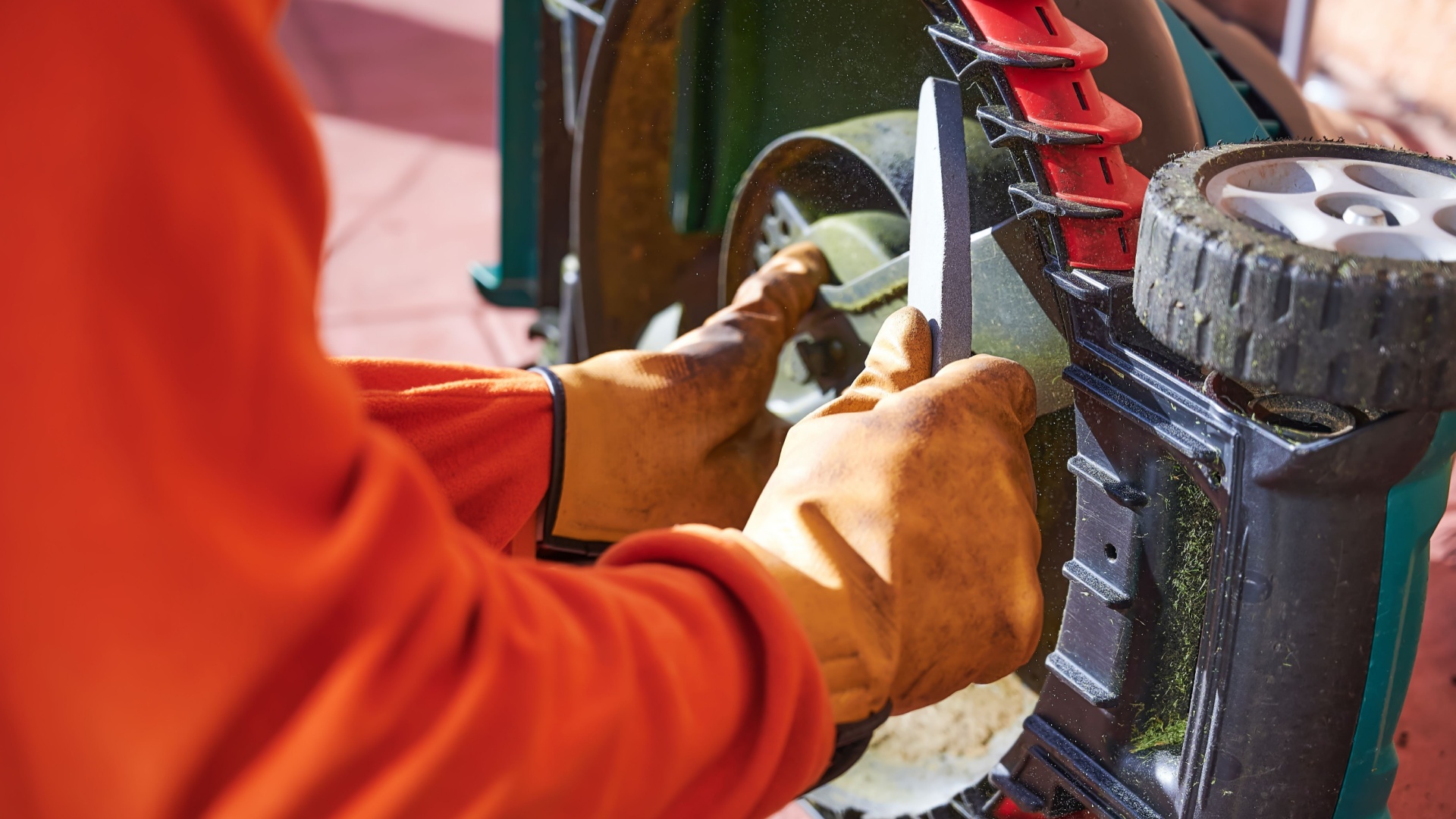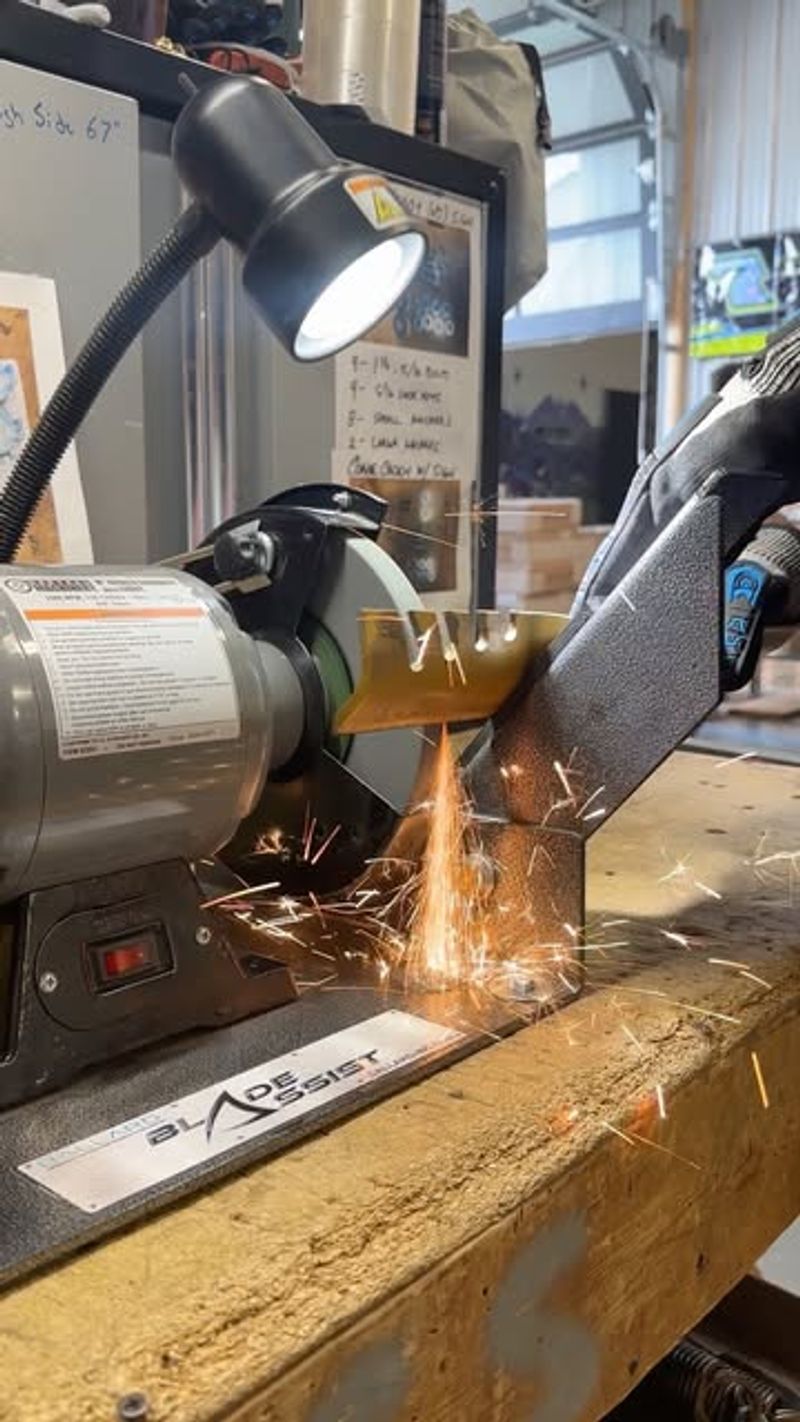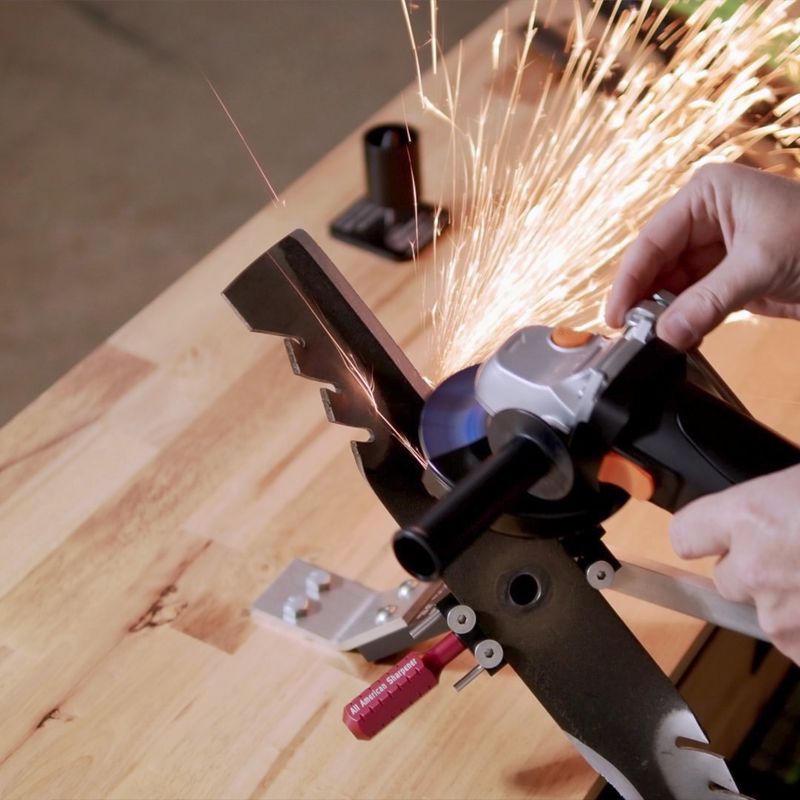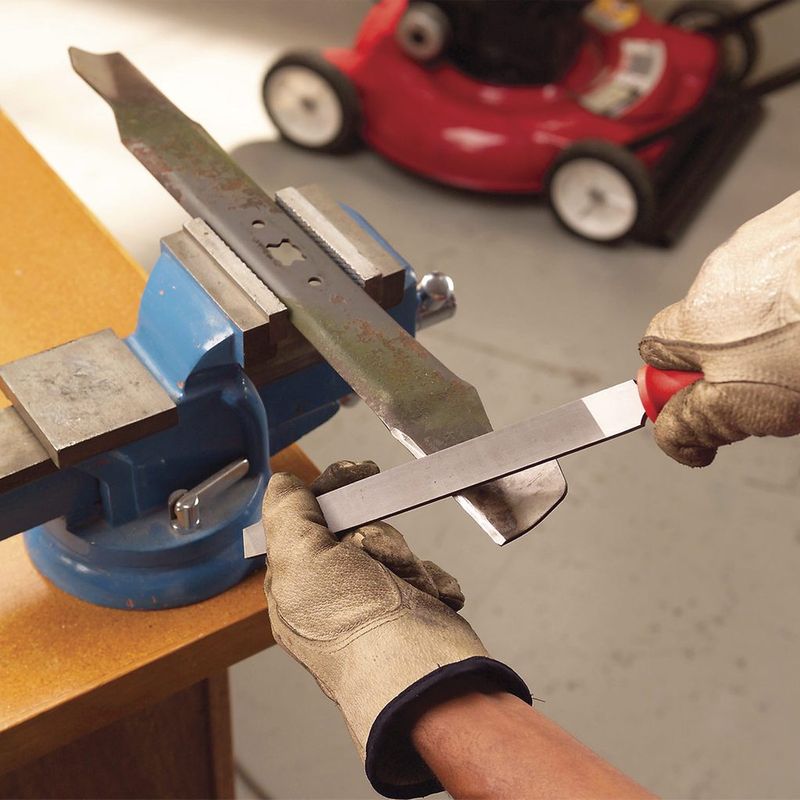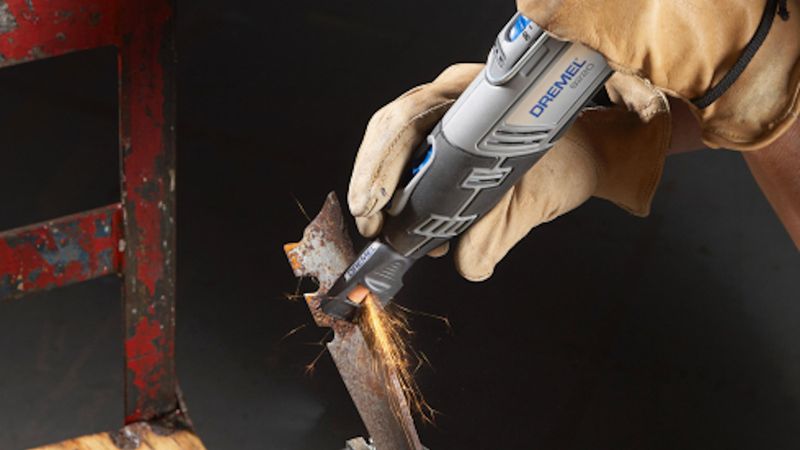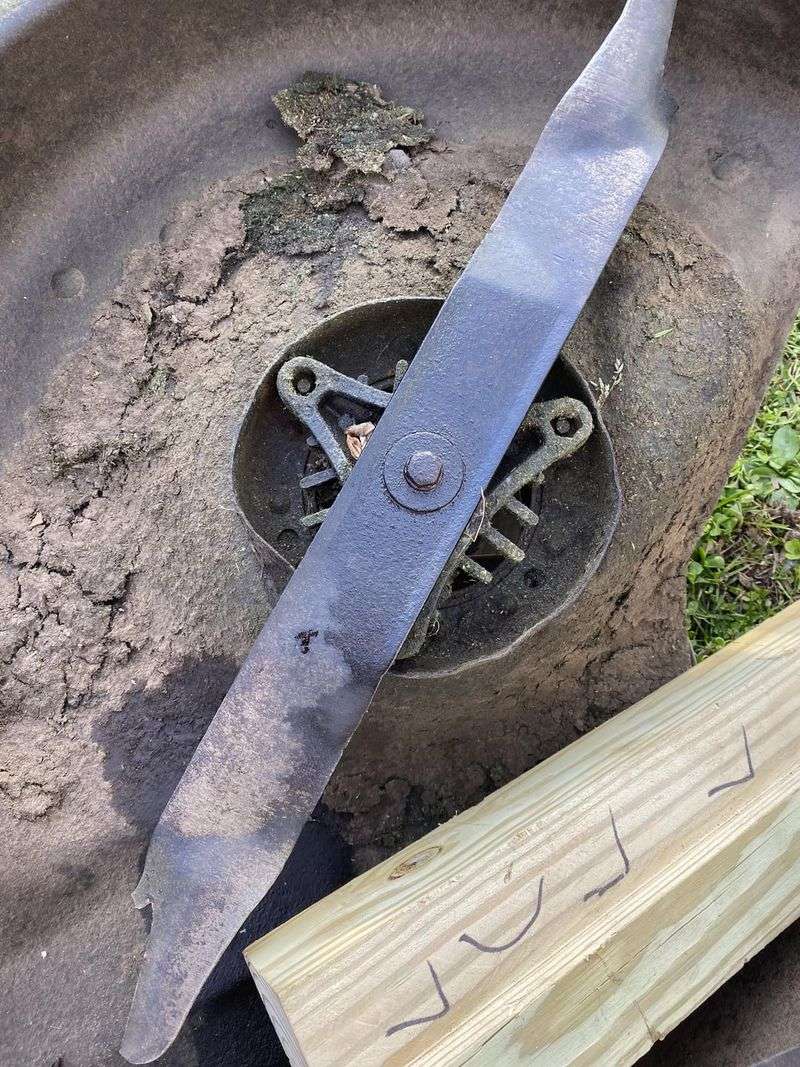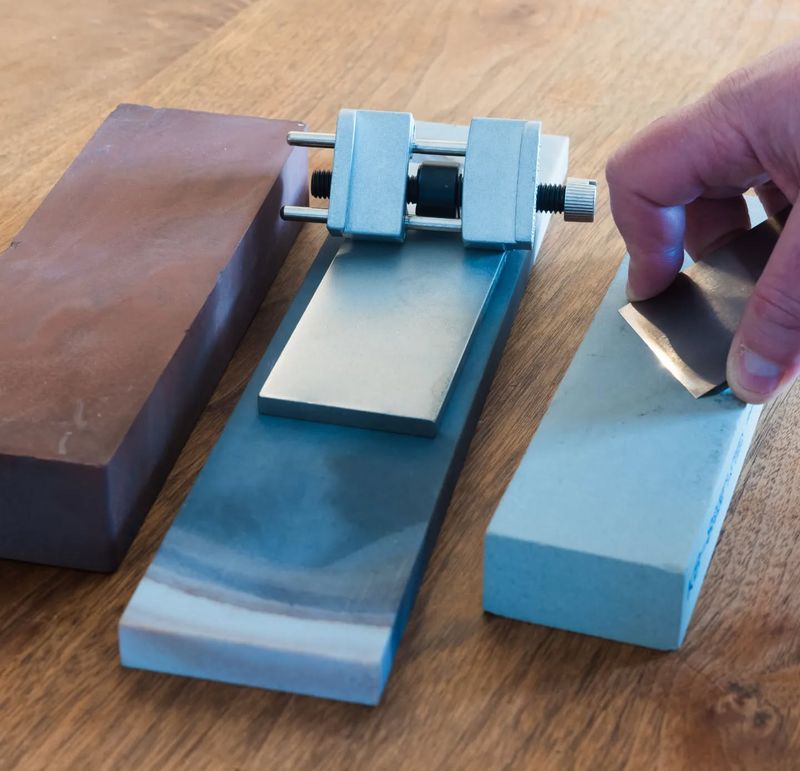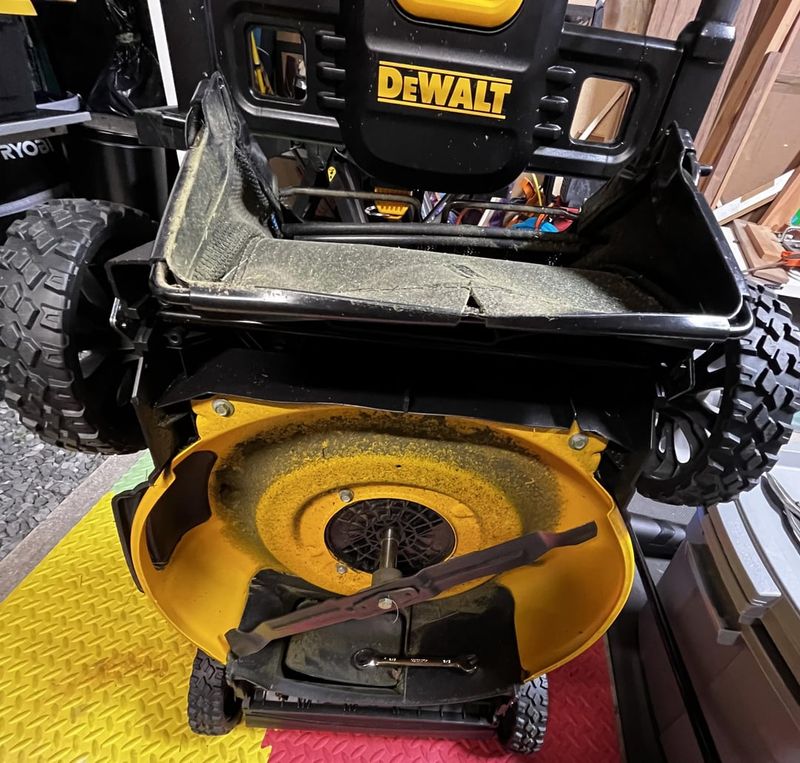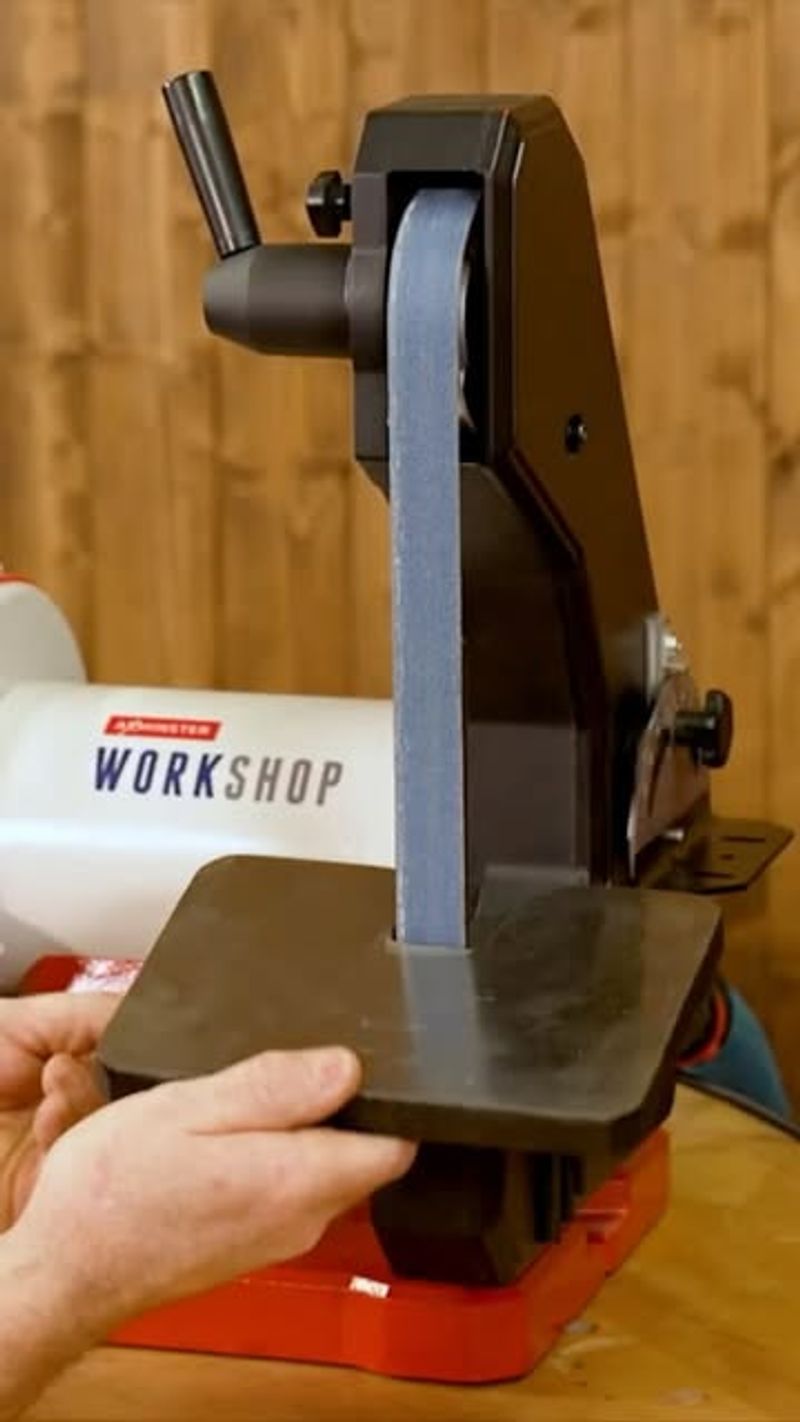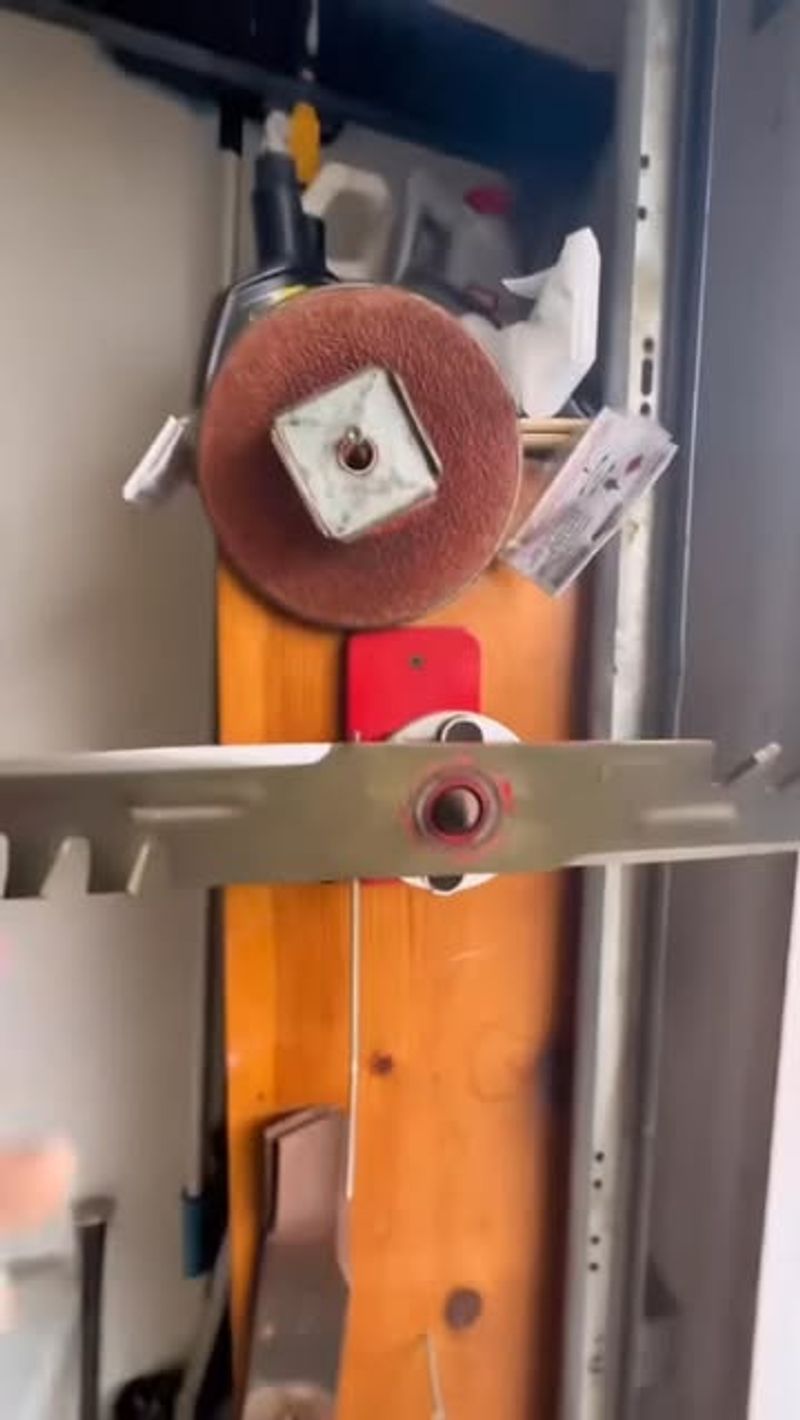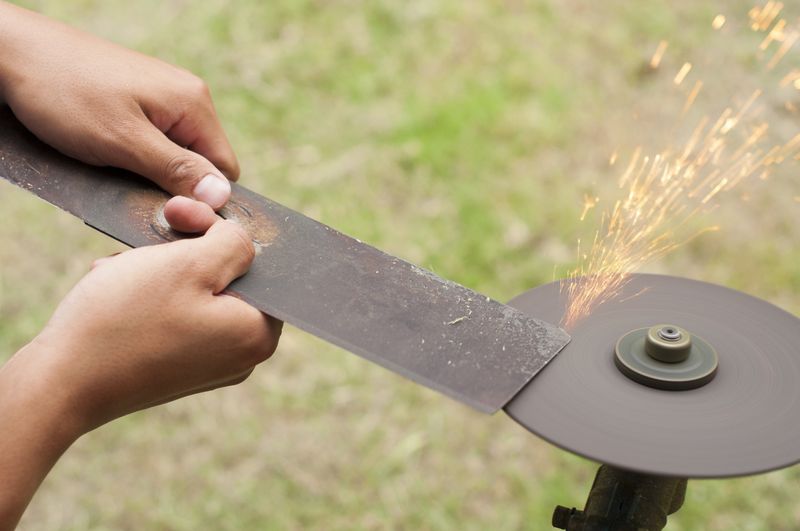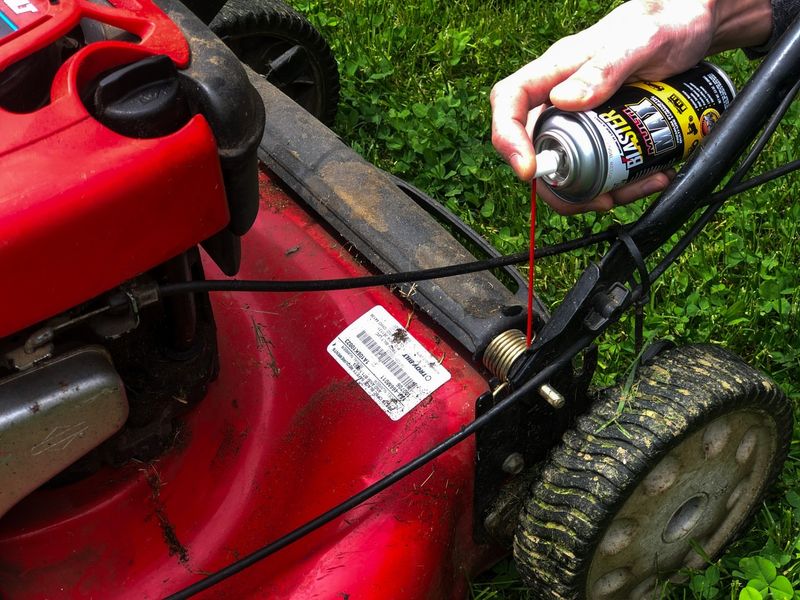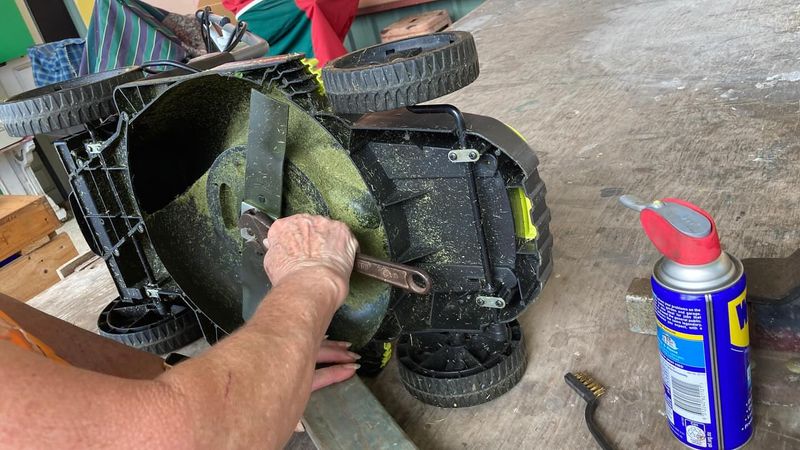A sharp lawn mower blade makes all the difference between a ragged lawn and a clean-cut yard that would make your neighbors jealous. Michigan homeowners take special pride in maintaining their equipment, especially after those harsh winters take a toll on cutting tools. From simple hand files to power tools, Michiganders have developed clever ways to keep their mower blades razor-sharp for that perfect summer cut.
1. Bench Grinder Method
Michigan garage warriors swear by the trusty bench grinder for quick blade sharpening. The fixed position creates a consistent angle while the powerful motor makes short work of dull edges.
Remember to wear safety goggles and gloves since metal sparks fly everywhere! Many DIYers mount their grinders permanently in workshops, creating dedicated sharpening stations they can use throughout the mowing season.
2. Angle Grinder Technique
Portable and powerful, angle grinders have become the go-to tool for many Michigan yard enthusiasts. The flexibility lets you work outdoors or in tight spaces when a full workshop isn’t available.
Most experienced users secure the blade in a vise first, then use smooth, sweeping motions to maintain the original cutting angle. The trick is keeping your wrist steady while moving along the entire blade edge at a consistent speed.
3. Traditional File Approach
Old-school Michigan gardeners often reach for a simple metal file for blade maintenance. No electricity needed means you can sharpen anywhere, even at the cottage up north where power might be limited.
The rhythmic strokes required build arm muscles while giving you complete control over the sharpening angle. Many find the process oddly satisfying – a quiet moment of focus before the noisy task of mowing begins.
4. Dremel Tool Precision
For intricate blade work, Michigan DIYers love their Dremel rotary tools fitted with grinding stones. The small size allows for precise edge control, especially on blades with unusual shapes or damage.
Working at higher RPMs requires a gentle touch – let the tool do the work without applying pressure. Many craftsmen mark their desired angle with a sharpie first, creating a visual guide that ensures consistency across the entire cutting edge.
5. Drill Attachment Kits
Clever Michigan homeowners often use blade sharpening attachments that connect to standard power drills. These affordable kits transform everyday tools into specialized sharpeners without breaking the bank.
The spinning stone creates a factory-like edge when used properly. Most successful users clamp the blade securely first, then maintain steady drill speed while moving slowly along the cutting surface, stopping occasionally to check their progress.
6. Sandpaper Block Method
Budget-conscious Michigan gardeners sometimes create homemade sharpening blocks using wood and adhesive-backed sandpaper. This ingenious approach costs almost nothing but delivers surprisingly good results.
Starting with coarse grit and progressing to finer papers creates a polished edge that cuts grass cleanly. The wooden block helps maintain the correct angle throughout the process, while the disposable sandpaper means you always have a fresh abrasive surface.
7. Sharpening Stone Technique
Natural whetstones have a special place in Michigan’s DIY culture, especially among those who also sharpen kitchen knives and hunting tools. The connection to traditional craftsmanship appeals to many rural homeowners.
Water or oil applied to the stone creates the necessary slurry for metal removal. The slow, methodical process takes longer than power tools but produces an exceptionally keen edge that many believe lasts longer during tough cutting conditions.
8. Reciprocating Saw Hack
Resourceful Michigan tool lovers have discovered that reciprocating saw blade holders make excellent sharpening guides. By mounting abrasive materials where the saw blade would normally go, they create improvised power sharpeners.
The back-and-forth motion mimics hand filing but with motor assistance. This creative repurposing works especially well for people who already own the tool for home renovation projects, making it a dual-purpose investment for household maintenance.
9. Belt Sander Approach
When facing multiple blades or severely damaged edges, Michigan yard pros turn to belt sanders for efficient metal removal. The wide abrasive surface makes quick work of even the dullest blades.
Most users secure the sander upside down in a vise, creating a stationary grinding station. This allows both hands to control the blade position against the moving belt, ensuring precise angle maintenance while the powerful motor does the heavy work.
10. Balancing After Sharpening
Smart Michigan mower enthusiasts know sharpening is only half the job – proper blade balancing prevents vibration damage to engines. Many create homemade balancers using nails mounted in workshop walls.
The blade should rest perfectly level when placed on the balancing nail. If one end dips down, they carefully remove small amounts of metal from the heavier side. This extra step ensures smooth operation and extends the life of expensive mower components.
11. Winter Maintenance Timing
Experienced Michigan yard masters sharpen blades during the winter months when mowers sit idle. The seasonal approach means equipment is ready the moment spring arrives.
Many create annual maintenance checklists that include blade care alongside oil changes and spark plug replacements. The winter timing also provides a welcome garage project during those long Michigan snow days, keeping outdoor skills sharp even when the ground is frozen.
12. Specialized Blade Sharpening Jigs
Precision-minded Michigan DIYers invest in purpose-built sharpening jigs that guarantee perfect angles every time. These devices hold blades at factory-specified positions while guiding files or stones along the cutting edge.
The consistent results justify the upfront cost for those with multiple mowers or who help neighbors with blade maintenance. Many users report that jigs reduce sharpening time while improving quality, making them popular in rural communities where everyone maintains large properties.
13. Multiple Blade Rotation System
Clever Michigan homeowners implement blade rotation systems using multiple sets that alternate between service. While one blade works on the mower, others await sharpening or serve as ready backups.
Color-coding with spray paint helps track which blade needs attention next. This systematic approach ensures you’re never caught with a dull blade during prime growing season, especially important in Michigan where summer grass grows incredibly fast after spring rains.
14. Protective Coating Application
After sharpening, savvy Michigan mower owners apply protective coatings to extend blade life. Simple household oil prevents rust during storage, while specialized products create slick surfaces that resist grass buildup.
The coating ritual marks the completion of the sharpening process. Many DIYers wipe blades with old t-shirts before applying thin layers of protection, knowing that these few extra minutes prevent hours of difficult cleaning later when facing stubborn rust or hardened grass clippings.
15. Community Sharpening Events
Michigan neighborhoods often organize spring blade sharpening gatherings where experienced DIYers help others prepare for mowing season. These community events build connections while sharing specialized tools and knowledge.
Local hardware stores sometimes sponsor these meetups, providing space and expertise. The social atmosphere turns a mundane maintenance task into an enjoyable tradition, with coffee and donuts accompanying the rhythmic sounds of files and grinders as everyone prepares for the growing season ahead.

